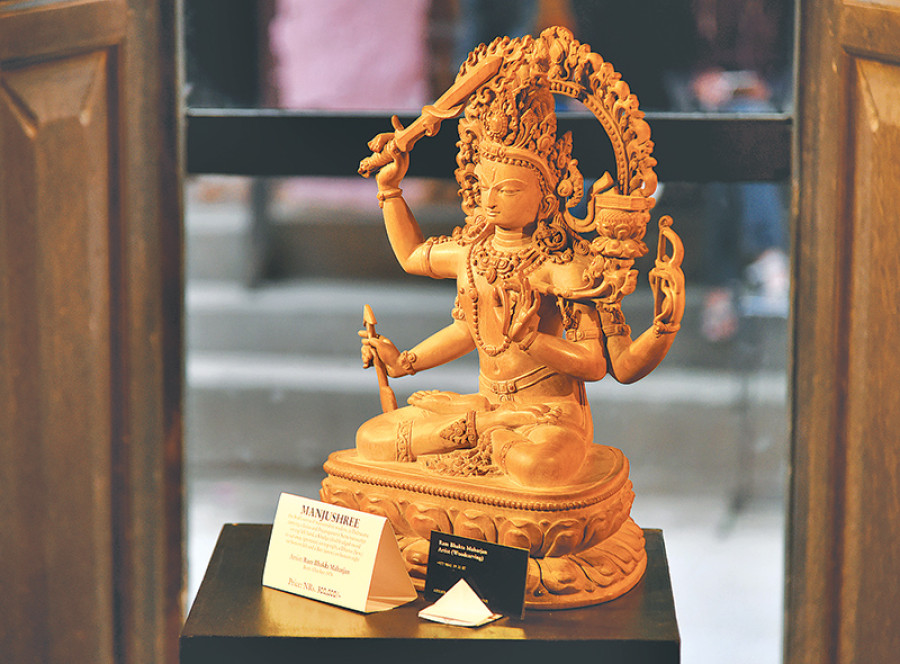Entertainment
Traditional woodcarvings on display at Newa Chen
As part of the Kathmandu Triennale 2017, an exhibition of woodsculptures created by artists during an apprenticeship programme conducted by Atelier for Artists is currently being held at Newa Chen Art Gallery, in Patan.
As part of the Kathmandu Triennale 2017, an exhibition of woodsculptures created by artists during an apprenticeship programme conducted by Atelier for Artists is currently being held at Newa Chen Art Gallery, in Patan.
The exhibit features works by a total of seven artists who worked under the mentorship of veteran sculptor Laximan Tuladhar Maharjan in Bungamati. The featured artworks were created by the artists during the apprenticeship programme.
During the programme, the artists created a variety of artworks based on traditional Newar style, and focusing on the proportions, anatomy and details of the sculptures including references of descriptions in religious scriptures.
Speaking to the Post, Swati Pujari, a non-academic co-ordinator of the programme, said, “Working during the programme, I discovered what it means for artists to sculpt images of deities, the religious significance of their work, and the elaborate process the creation goes through.” He went on, “It has been a learning experience for all of us involved in the programme, and not just for the participants following the apprenticeship. This showcase is a matter of great satisfaction for us, yet there is still a long way to go.”
The yearly programme aims to help local artists enhance their skills, under the tutelage of Laximan Tuladhar Maharjan, who has been working with woods since 1978, when the would-be artist was only 11.
Maharjan started off with woodcarving as a way to support himself, but later, enthused by the many woodcarving featuring deities that abound the Valley’s temples, took up his profession as an art, as “a work of Dharma,” as the artist likes to call it.
Maharjan said: “Woodcarving is a very important form of art, especially in a city like Kathmandu. It is unique in the world and should therefore be preserved. The art form makes up the beauty of our temples, and boasts a religious, traditional and anthropological importance.”
Maharjan says that he hopes the current exhibiton would go on to bring to the fore the current status of traditional woodcarving of Nepal, and that it will kick off discourses on this antique form of art, its preservation and promotion.




 17.12°C Kathmandu
17.12°C Kathmandu









